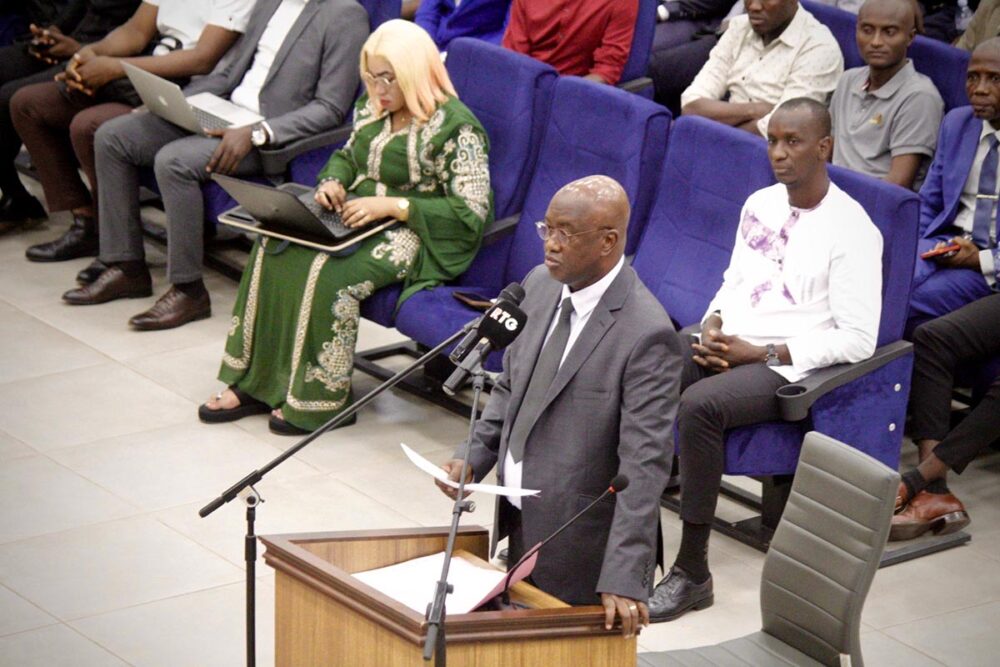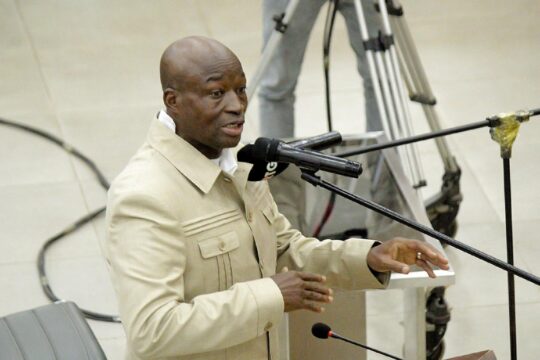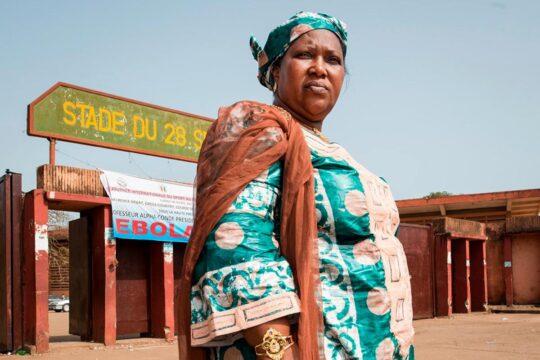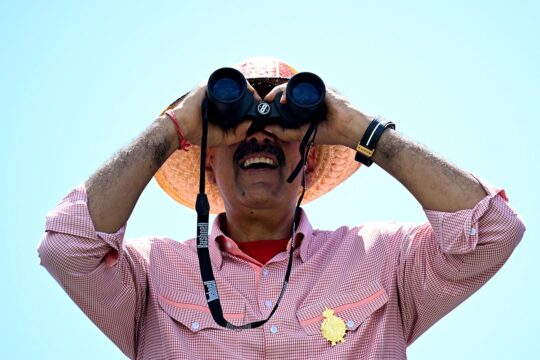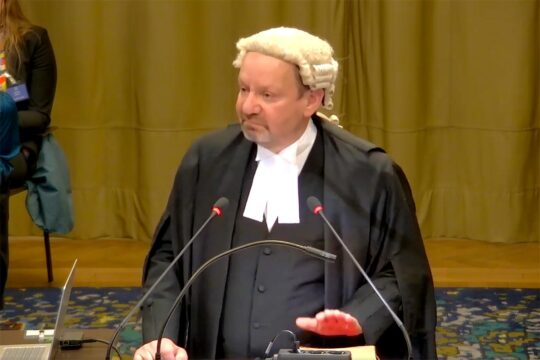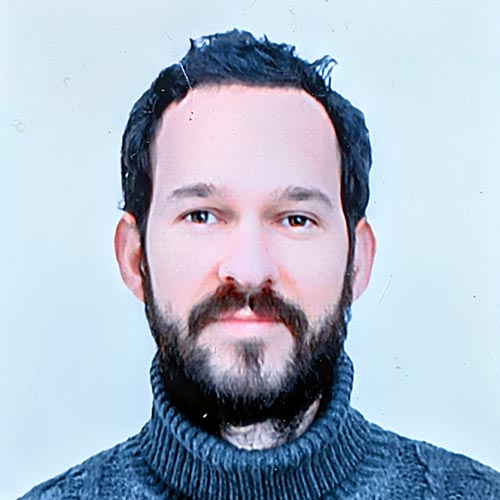Fatou Sikhé Camara is wearing eye shadow, large gold earrings and a gold necklace. In 2009, the elegant 61-year-old was director of the Donka national hospital in the Guinean capital. In September of that year, a crackdown on an opposition demonstration at Conakry's stadium left over 150 people dead and hundreds more injured. Begun in September 2022, the trial on this massacre has resumed at the Dixinn Criminal Court, after a break during the holiday season. On January 23, Fatou Sikhé Camara told the court how her establishment was quickly overwhelmed by the situation. "We found ourselves faced with a veritable human slaughter. But the teams mobilized as much as they could," she said. In the dock, impassive, the defendants listened attentively to the doctor's story.
On September 28, 2009, Dr Sikhé Camara was not working. She was at home when she was told that something serious was happening. "I was told that there was shooting at the stadium and that people were injured. So I went to the hospital to try and find out what was going on,” she recounted. She arrived on the scene at around 10 o'clock. "I immediately went to the emergency room, where all the teams were already mobilized. We saw injured people arriving, lots of injured people, in really... very unbearable states," she said, struggling to finish her sentence.
The emergency manager activated the emergency plan. According to hospital protocol, this plan is activated "as soon as the number of injured reaches 25". "By the time I arrived, this number had already been exceeded," sighed the female doctor. That day, more than 500 people were admitted to Donka, "a situation that none of us medical professionals had ever had to face in our entire careers". Over the following days, the number of people admitted continued to rise. A total of 815 wounded were treated at Donka. 77 were hospitalized, of whom 6 died, and 738 were treated on an outpatient basis. The doctor gave a breakdown of the patients treated: 89 had injuries caused by firearms, 14 by knives, and 389 suffered contusions. More than 300 people were classified in an "other" category. On September 28 and the following days, the gynaecology-obstetrics department treated 32 cases of sexual violence. “We treated some of the injured for months on end," she recalled. "We had people who were disabled for life, due to a severed spinal cord, for example."
Soldiers in the hospital
“I saw that the hospital's resources were no longer sufficient, so I immediately called my superiors, in particular the Minister of Health, to tell him that we needed pharmaceutical assistance,” the witness continued. The Minister found the director in the emergency room and immediately took stock of what was happening, she told the court. He quickly released stocks of equipment and medicines from the central pharmacy. "The treatment [of the injured] was carried out in very good conditions, by the grace of God, for all the victims who arrived at Donka.”
Sikhé Camara praised the actions of the then Minister of Health, Colonel Abdoulaye Chérif Diaby, who was accused of obstructing care of the wounded and is now in a glass box alongside nine other defendants. "In collaboration with the Ministry's executives, he set up the national health crisis committee, which was made up of hospital managers from the two national hospitals Donka and Ignace Deen, senior executives from the Ministry of Health and the Ministry's partners,” she said. As for the role played by Moussa Dadis Camara, then head of State and now the main suspect in the case, she simply said that he "made a sum available to the Ministry of Health to improve care of the wounded".
The court president could not help noticing contradictions between the director’s version and that of the victims. Colonel Chérif Diaby is accused by the civil parties of having come to the hospital accompanied by military personnel. He is said to have insulted and even assaulted the wounded. "Did you observe the presence of the defence and security forces at Donka on that day?" asked judge Ibrahima Sory II Tounkara. The question was simple, the witness's answer less so. She confirmed having seen military agents around the hospital who were there, she says, to facilitate the work of her teams, but inside Donka she saw no one. At first, she admitted having heard doctors talking to each other and saying that "soldiers had come in to prevent them from working". But as the interrogation progressed, her words became less and less coherent. In the end, the director described these discussions as "rumours". The same applies, according to her, to the ransacking of the Donka hospital pharmacy reported by witnesses. There may have been a heavy raid by the military, but the pharmacy was able to continue operating normally, she assured the court. "At no time was continuity of care interrupted at Donka," the director insisted.
View from the morgue
With his serious look, charcoal grey suit and tie and thin-framed glasses, Dr. Hassane Bah was the only forensic pathologist in Guinea at the time of the massacre. He was in charge of the morgues at Donka and Ignace Deen hospitals. On September 28, 2009, they were bursting at the seams with corpses. “They had to deal with 58 bodies," he says. There was not enough room, so the bodies were lined up two by two. Others were embalmed to "slow down putrefaction" and left on straw mats. Hassane Bah, who took the stand on January 22, says he did what he could to document these cases of violent death. "I didn't receive any requisitions for autopsies," he says. He had to content himself with examining the bodies to identify them and determine the cause of death. "The first thing we did was to strip the bodies and collect objects such as watches and identity papers.” He noted 13 cases of death by firearms, of which nine victims were shot in the back, he explained. One of them even shows the stigmata of a "close-range" shot. "So we deem that the gun was at temporal lobe level, here," says the doctor, mimicking a gun and pointing with his index and middle fingers to the area on his own skull. "The brain was projected out of the skull."
His account is cold, precise and scientific. He found several bullets and is adamant that the shooters were armed with Kalashnikov assault rifles. He also found traces of "sharp instrument wounds", such as a machete, "and sharp stab wounds" such as with a knife or bayonet, on 10 corpses.
During his questioning, he read out the names of the various victims he was able to identify. He listed their ages, professions and causes of death amid resounding silence. Most of the deceased were young men, but there were also several teenagers and an old lady. While the investigation file is sorely lacking in material evidence, Dr. Bah offered an expert opinion. "If the crime scene had been properly exploited, we would have had a lot of information," he concluded bitterly.


